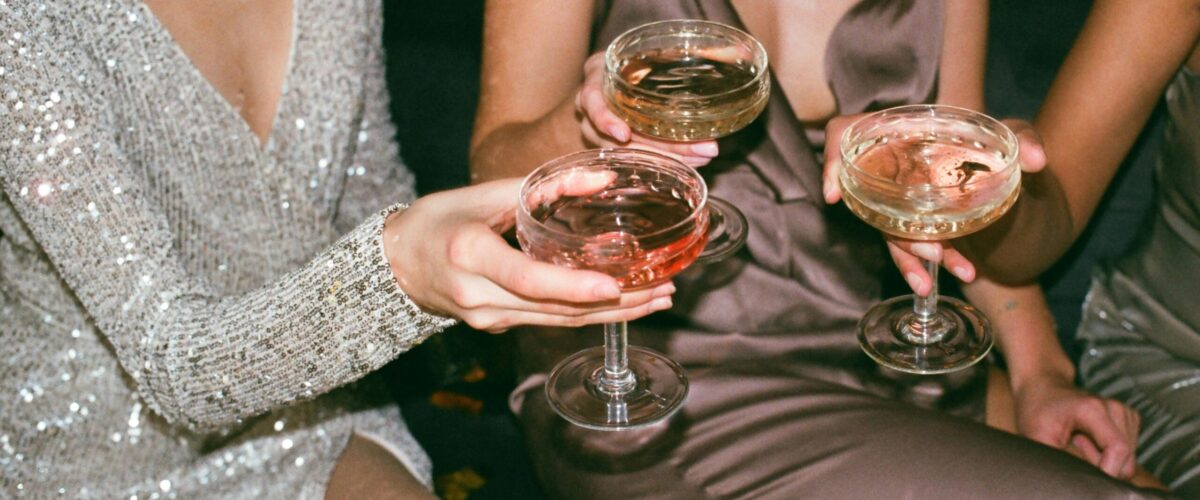The days of wild party nights fueled by heavy drinking are fading fast. In 2025, a new culture of mindful drinking is sweeping across Europe, driven largely by Gen Z. According to a recent report by ADM, nearly 44% of Gen Z consumers in Europe report drinking less alcohol today than two years ago, compared to 36% of Millennials. This shift is not just about health consciousness — it’s about a deeper, value-driven redefinition of what it means to enjoy life. Young consumers seek experiences that prioritize wellness, social connection, and self-awareness, without the side effects of alcohol. As this “Generation No Alcohol” grows louder, the food and beverage industry — and particularly restaurants and bars — must adapt. Mocktails, alcohol-free beers, and premium no-alcohol wines are booming, but traditional nightlife venues are starting to feel the pressure of a generation that celebrates differently.
Trend Snapshot / Factbox
| Aspect | Details |
|---|---|
| Trend name and brief definition | “Mindful Drinking”: reducing or eliminating alcohol for wellness and lifestyle reasons |
| Main ingredients or key components | Mocktails, alcohol-free beers, non-alcoholic wines, adaptogenic drinks |
| Current distribution (where can you find this trend now?) | Europe, North America, Australia |
| Well-known restaurants or products currently embodying this trend | Seedlip, Listen Bar, Humble Warrior, Lyre’s Non-Alcoholic Spirits |
| Relevant hashtags and social media presence | #SoberCurious, #MindfulDrinking, #DryLife, #SoberParty |
| Target demographics (who mainly consumes this trend?) | Gen Z, Millennials, health-conscious urban consumers |
| “Wow factor” or special feature of the trend | Focuses on wellness without sacrificing social enjoyment |
| Trend phase (emerging, peak, declining) | Emerging |
Generation No Alcohol: Lifestyle Over Liquid Courage
Unlike previous generations, Gen Z is not abstaining out of strict morality or medical advice. Their reduced alcohol intake is a lifestyle choice rooted in a broader shift toward mental well-being, fitness, and personal branding. Social media plays a significant role: public consciousness about one’s online image has discouraged reckless behavior. As a result, drinking heavily at parties is increasingly seen as outdated or even embarrassing. Events like “Sober Raves” and “Dry Socials” are growing, while hashtags like #SoberCurious and #DryLife trend across Instagram and TikTok. According to ADM, these young consumers are building an image around control, clarity, and consciousness. For Gen Z, pleasure is no longer linked to excess but to authenticity, creativity, and connection.
“For Gen Z, celebrating without alcohol isn’t a compromise — it’s a power move.”
The Booming Business of Mocktails and No-Alcohol Alternatives
Restaurants, bars, and beverage brands have recognized the powerful purchasing potential behind this sober revolution. Today’s mocktails are a far cry from sugary, uninspired “virgin” versions of classic cocktails. Instead, they showcase sophisticated blends of botanicals, artisanal syrups, and fermented ingredients. Brands like Seedlip and Lyre’s are leading the movement, crafting alcohol-free spirits that deliver complexity and depth. Meanwhile, non-alcoholic beer and wine categories are shedding their stigma of being “less than.” According to a Forbes analysis, sales of no- and low-alcohol drinks are expected to grow by 30% in Europe by 2026. Bars such as Listen Bar in New York, a dry pop-up with a full mocktail menu, are redefining nightlife without the buzz. Food professionals are responding by creating full “No & Low” drink lists, pairing alcohol-free beverages with gourmet menus to enhance the dining experience.
Challenges for Restaurants and Bars: Less Alcohol, Less Revenue
While the mindful drinking trend is a win for wellness, it’s creating real challenges for the traditional hospitality sector. Alcohol sales have historically been a major revenue driver for restaurants and bars. With Gen Z spending less on drinks and going out less frequently, many venues are facing declining profits. As FoodDive reports, some establishments are pivoting by offering enhanced experiences such as sober tasting menus, non-alcoholic cocktail classes, and day-party brunches focused on healthy living. However, adaptation isn’t easy: it requires rethinking everything from menu design to marketing language. Without the high margins from alcohol sales, businesses must innovate faster to attract a generation that craves experiences over intoxication. Offering authentic, creative, and inclusive alternatives will be crucial for survival.
Future Outlook: A Sobering but Sweet New Normal
The “Generation No Alcohol” trend is still in its early stages but already shaping the future of dining and socializing. As more brands, restaurants, and event organizers recognize the financial and cultural power of sober consumers, we can expect even greater innovation in the space. Hybrid venues — part wellness cafe, part dry bar — are likely to become the norm. Meanwhile, brands that align with Gen Z’s values of authenticity, inclusivity, and mindfulness will thrive. Food and beverage professionals must embrace this shift not as a threat but as an opportunity: an invitation to reimagine what celebration, connection, and indulgence mean in a world that no longer needs alcohol to have a good time.

